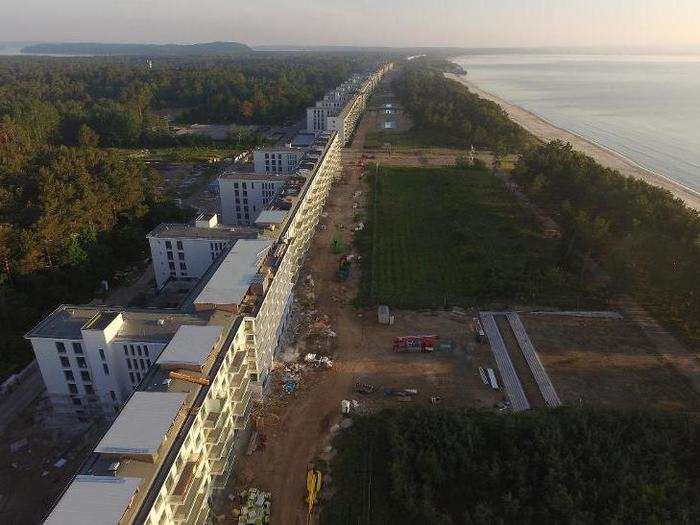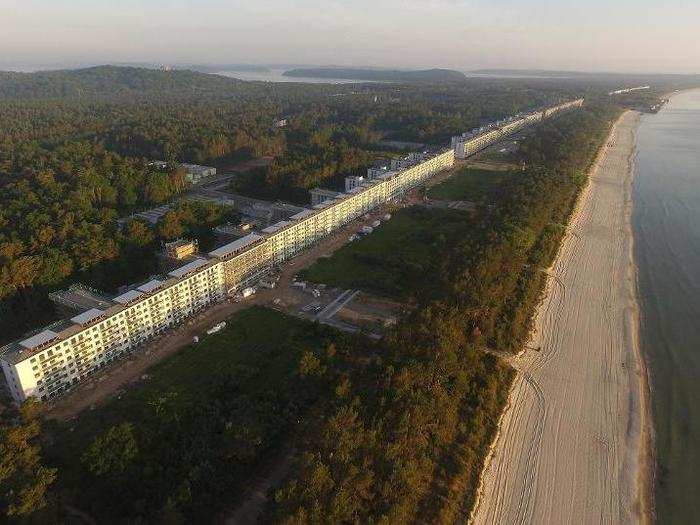It also features the world's longest youth hostel, which contains 402 beds and 96 rooms.
In the early 2000s, several German developers fought for the initial rights to revive Prora.
In 2006, Germany's federal agency for real estate bought Block 5, which contained the hostel.
The hostel opened in 2011.
The entire building measures 2.8 miles long, and is located 150 yards from the beach.
"The photos cannot physically do it justice," Moorhouse said. "It's too big." By all accounts, it would have been one of the most impressive structures in the world.
In the center of Prora, Hitler commissioned a festival hall large enough to hold all 20,000 residents at once.
Hitler's megalomania — a trait shared by many dictators — was also manifested in his plan for the Festival Hall. The Nazi leader commissioned architect Erich Putlitz to design it.
The hall would contain two wave pools and theaters for movies and live performance.
The structure was built to hold 20,000 people.
While the Nazi police state was in development, the overarching German vision was a hopeful one, Moorhouse told Business Insider. "And this," he said, "is where something like Prora comes in."
Each room would measure 16 feet by 8.2 feet and include two beds, a sink, and a dresser.
More than 9,000 workers helped construct Prora.
Historian and tour guide Roger Moorhouse told Business Insider that Prora was intended as the carrot to the stick of the Gestapo — a pacifying gesture to get the German people on Hitler's side.
At the time, Germany was still enmeshed in the concept of "people's community," or volksgemeinschaft, from World War I. It was a sense that Germans stood united, no matter what.





